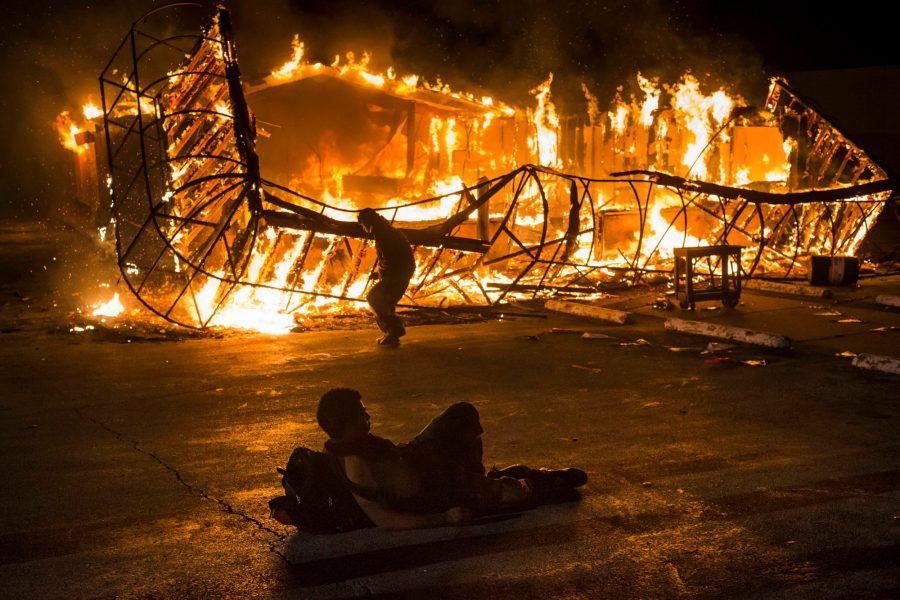When a Ferguson grand jury chose not to indict Officer Darren Wilson, America blew up. After all, when it seems like police can kill unarmed black men and get off scot-free, what can one feel but anger?
But amidst the outcry for justice, the facts and indeed justice itself get lost in the frenzy of public opinion. People talk about a lot of things with respect to Ferguson: rioting, the militarization of police and the history of race relations in the United States. We’re too excited to talk about everything except what happened in Missouri on Aug. 9.
[button link=”http://www.nola.com/news/ferguson/ferguson-all-1.pdf”] Download Grand Jury Evidence (PDF)[/button]Every shred of evidence presented to the grand jury is publicly available for download: all 5,670 pages of it. The grand jury decided after a preponderance of all this evidence that Darren Wilson’s shooting of Michael Brown was justifiable and did not warrant an indictment. But the protests started before any of this evidence was made known to the public, and they continue in force afterwards.
Many critics including Missouri State Senator Jamilah Nasheed criticized St. Louis County Prosecutor Robert McCulloch for his handling of all this evidence. She said “He doesn’t have the fortitude to do the right thing when it comes to prosecuting police officers.” That a prosecutor would fold on his duty to prosecute in order to protect police or deny justice to Ferguson’s African-American community is a horrifying proposition, but thankfully it doesn’t hold water. Let’s break down how the Ferguson grand jury was handled in comparison to a typical grand jury proceeding.
The New York Times explained the grand jury practices used in Ferguson in detail as part of their exhaustive summary of those thousands of pages of evidence. Your typical case is presented to a grand jury over the course of a day. The grand jury in the Wilson case met and deliberated for 25 days. Typically, only a few witnesses are called to describe and explain physical evidence—usually police investigators. In the Wilson case, 60 witnesses were called, and the grand jurors viewed pictures of the scene themselves. Usually grand jury evidence remains secret if the case doesn’t go to trial, but McCulloch released every shred of evidence and testimony after the grand jury released its verdict.
At every turn McCulloch set the grand jury’s agenda to output the most accurate verdict they could and made the process abundantly transparent. Though the lack of a recommended charge strikes many as strange, it makes sense if the prosecutor honestly did not think the evidence supported an indictment. The convening of a grand jury was imperative for a case this touchy, but that doesn’t mean there was ever sufficient evidence to indicate Darren Wilson should be charged with a crime. This wound up being the opinion of the grand jury after weeks of poring through thousands of pages of testimony and facts.
I see two possibilities here. The unlikely first is that every protester who wanted an indictment read every page of that evidence and decided they were better equipped than the grand jury to decide what happened Aug. 9. The second is that the outrage was never really about what happened in Ferguson, but about abstract issues: the police becoming militarized, the perception that white police are racist, police brutality in general and the excessive use of force. All of these conversations are worth having, but so too are all of these conversations irrelevant in determining whether an indictment should be made.
The objection is that this is about more than Ferguson; an NYC grand jury did not indict a white New York police officer who choke-held Eric Garner—a black man—to death. Another unarmed black man in Phoenix, Ariz. was killed last Tuesday by another white police officer. Are people really wrong for feeling like the deck is stacked against them?
It’s important to keep in mind that it’s easy to cherry-pick cases to fit into a narrative. South Carolina indicted three police officers within the last four months alone for shooting unarmed African-American men. A black police officer shot an unarmed white man in Utah just two days after Michael Brown was shot in Ferguson. But none of this information is strong evidence for any macro-level trend of racism or critical scrutiny of police. They’re examples. Cases that could be fit conveniently into a narrative of oppression. But just because tragic shootings can fit snugly into an over-arching political jigsaw puzzle doesn’t mean they should.
In all these cases— Ferguson, New York, South Carolina or Utah—remember that facts matter. Opinion is wild and often unfounded, but facts don’t lie; and facts are the only criterion suitable for deciding to indict or not.












































































































